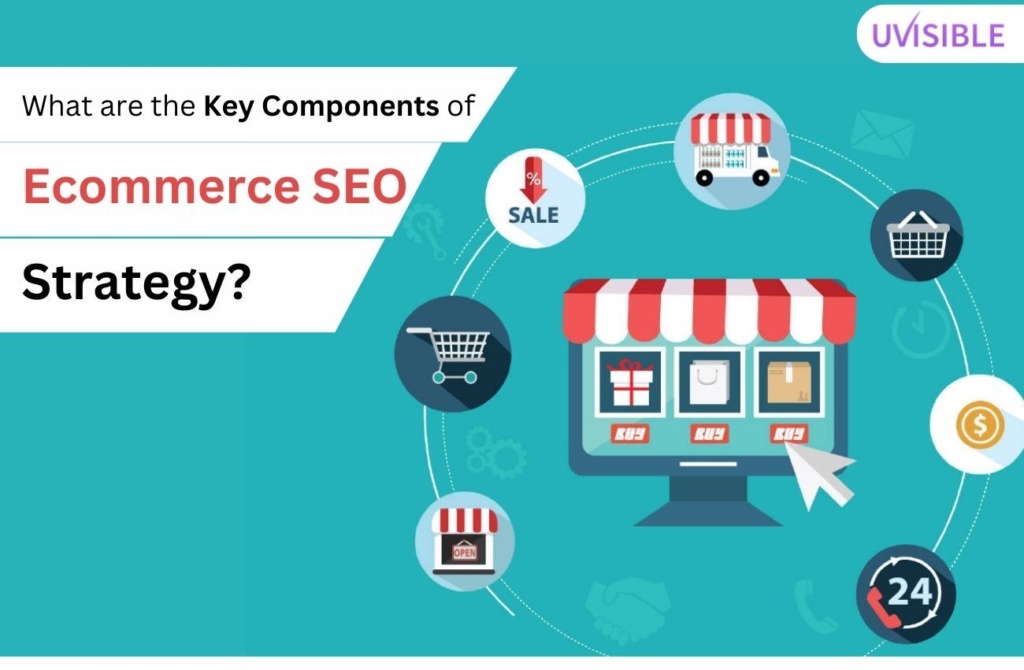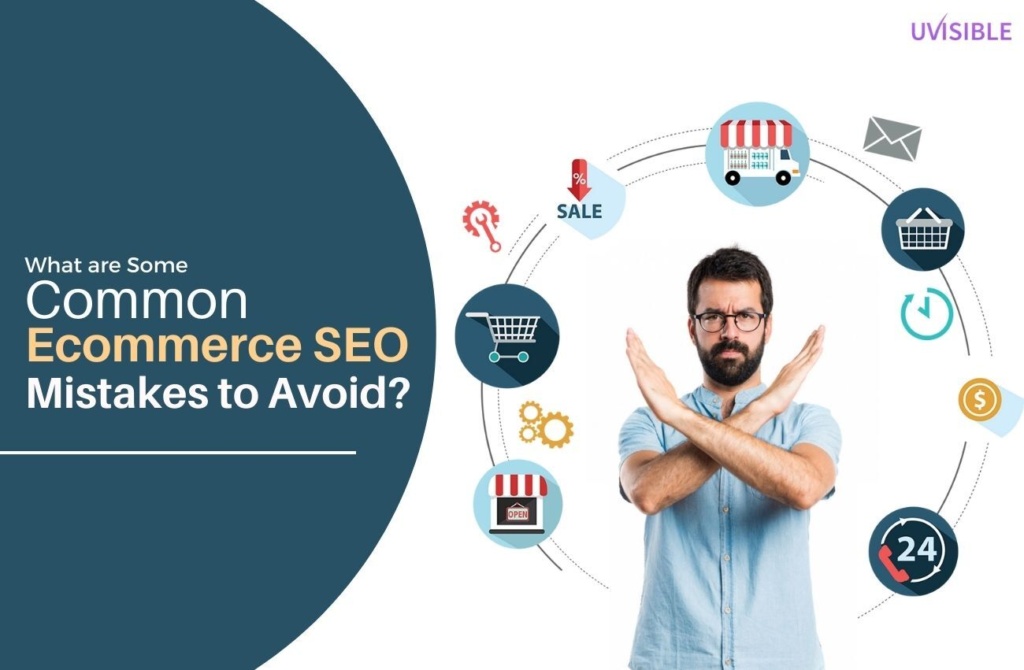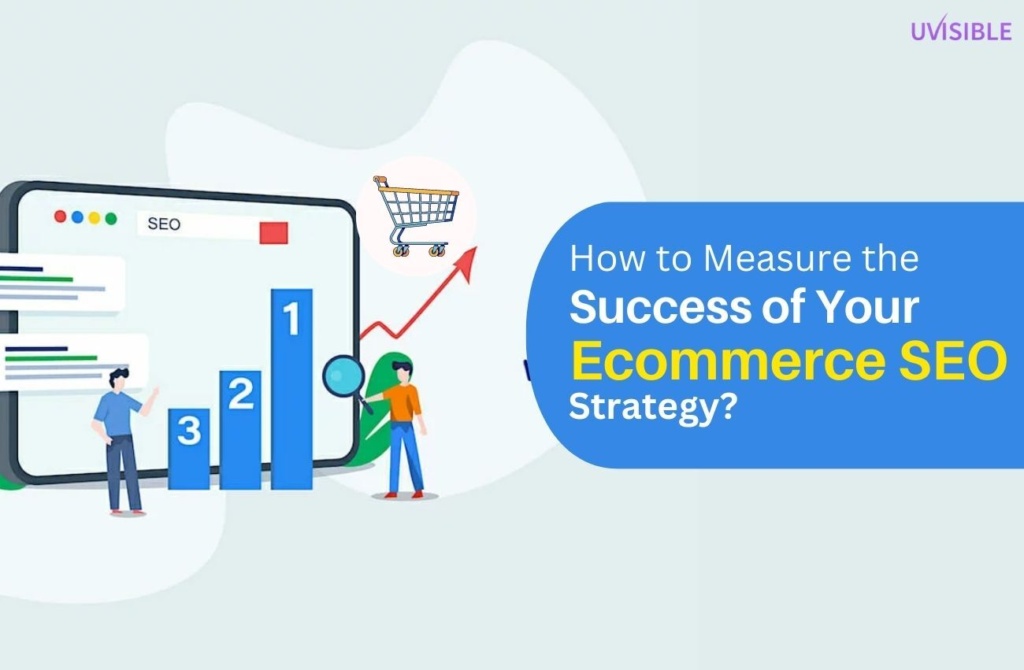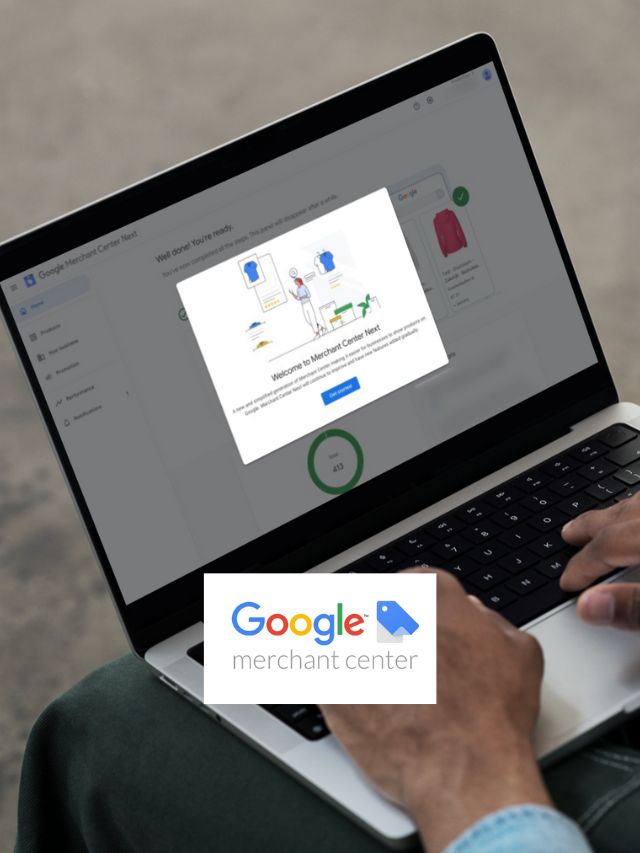Are you struggling with quality website traffic and visitor conversion for your eCommerce site?
Looking to gain online visibility and increase sales by finding the right target audience and ranking at the top of search engines?
Well, it’s time you rely on the prowess of SEO and incorporates an Ecommerce SEO strategy template to make your business stand out in this highly competitive digital world.
Today, we will discuss all the essential components of Ecommerce SEO, including its importance, its importance, product page optimization, content generation, and so on.
We would request you to follow this Ecommerce SEO Guide till the end if you really want your eCommerce business to achieve skyrocketing growth and significant lead generation.
What is Ecommerce SEO and Why is it Important for Online Businesses?

Assume you have a fantastic online store, but it is buried in the depths of Google search results.
You will need to be made aware of it, and the sales you deserve will instead go to your competitors.
That’s where eCommerce SEO comes in; SEO for e-commerce is a marketing approach that assists online shops in ranking better in search engine results.
A well-designed and optimized website with high-quality content will rank higher in search engines like Google, improving visibility and bringing visitors to your store.
Ultimately, the undiscovered weapon makes your store visible and easily accessed by potential clients.
Certainly, you can always pay for Google advertisements to promote your store to the top of search results, but why pay for something that is free?
You may generate high-quality organic traffic to your website without spending a dollar on ads if you use efficient eCommerce SEO.
Unlike traditional SEO, which prioritizes your website’s primary pages, eCommerce SEO prioritizes your product and category pages, including:
- Optimizing your headlines.
- Product descriptions.
- Meta tags.
- Internal link structure.
- Image optimization.
- Navigational structures.
Hence, if you want your target audience to find your eCommerce store, eCommerce SEO is a must-have.
But, Why it’s Important?
Did you know that the majority of internet customers start their purchasing process with a simple search query? That’s right, more than 70% of them!
Here is where SEO for eCommerce websites comes into play.
You can ensure that your products are visible to individuals actively looking for them by optimizing your online store for search engines.
After all, search engines account for more than a third of all eCommerce web traffic.
It’s not only about being visible; it’s also about reaching the appropriate people.
Understanding user search intent comes into play here.
You want to target those who are seeking with transactional intent, or who are ready to buy something.
You risk losing significant opportunities to attract potential buyers to your website if you do not use an eCommerce SEO strategy template.
Hence, if you want to expand your eCommerce business, you must prioritize eCommerce optimization.
What are the Key Components of Ecommerce SEO Strategy?

Let’s take our Ecommerce SEO guide towards some effective strategies that consist of keyword research, optimizing site architecture, ensuring technical SEO is up to pace, optimizing on-site content, and developing a strong link profile all part of the process.
You may improve your website’s search exposure, attract more visitors, and eventually increase your online sales by following these Ecommerce SEO Strategy Templates:
Performing Ecommerce Keyword Research
The first step in developing an efficient Ecommerce SEO strategy is to undertake extensive keyword research.
This entails learning what your target audience is looking for, what words they are using to find similar products to yours, and what the competition is doing.
One of the easiest ways to find out the most relevant eCommerce keywords is by relying on search suggestions provided by various platforms like Amazon, Google, Etsy, eBay, and so on.
For example, if you have an eCommerce store of Sports Equipments, you must identify, the relevant keywords for your store, so that you can optimize your website content, product page descriptions, and meta tags to rank better in search engine results pages by choosing the correct keywords.
Let’s say you want to sell tennis rackets online, and you are conducting keyword research, first, go to any of the platforms mentioned above, and type “best tennis racket”, you will see a list of search queries as the search suggestions.
Thus, this becomes your potential list of keywords which you can further sort out by running it through professional SEO software like Semrush, Ahrefs, Google Keyword Planner, and so on.
Site Architecture
Would you want your online customers to be lost in your site’s flow, leading them to bounce to some other website that may be well-organized and contain the correct site architecture?
Absolutely Not, right?
You need to maintain the sublime and spotless structure of your website by ensuring the way pages are linked to one another.
A well-organized website structure makes it easier for search engines to crawl and index your site, resulting in higher search visibility.
Make sure your website is simple to use, has clear sections, and is mobile-friendly.
Technical SEO for Ecommerce
Technical SEO for Ecommerce serves as the unseen architect of search engine optimization, working behind the scenes to lay a strong foundation for your online presence.
While shoppers may not directly perceive it, the impact of technical SEO is profound, ensuring that your website is not only visible to search engine crawlers but also offers optimal site speed and functionality on mobile devices.
This, in turn, translates into tangible benefits for Ecommerce businesses, making it a crucial component of any comprehensive SEO strategy.
Key Importance of Technical SEO for SEO Success:
- Enhanced Website Engagement: Technical SEO contributes to better website engagement by optimizing site speed and accessibility. A fast and user-friendly website fosters a positive user experience, encouraging visitors to stay longer and explore your offerings.
- Increased Organic Traffic: The meticulous optimization of your website’s technical aspects makes it easier for search engine crawlers to navigate and index your content. This enhanced crawlability results in increased organic traffic as search engines prioritize and rank your site more favorably.
- Foundation for Ecommerce Success: For Ecommerce businesses, technical SEO is akin to keeping the house in order before inviting guests. It ensures that the virtual storefront is not only aesthetically pleasing but also functions seamlessly. This foundational optimization is particularly vital for creating a positive first impression and facilitating smooth customer interactions.
Essential Technical SEO Tips for Ecommerce Sites:
To maximize the impact of technical SEO for Ecommerce, consider implementing the following SEO tips:
- Logical Internal Linking: Create logical internal linking structures within your menus, guiding both users and search engines through the hierarchy of your website. This enhances navigation and improves the overall user experience.
- Google Search Console Submission: Ensure your website’s visibility by submitting your sitemap to Google Search Console. This step enhances search engine awareness of your site’s structure, facilitating efficient crawling and indexing.
- Optimized Image Loading: Enhance site performance by optimizing images for quick loading. This not only contributes to improved user experience but also aligns with search engine preferences for fast-loading pages.
Recognizing the pivotal role of technical SEO for Ecommerce is essential for businesses seeking a competitive edge in the digital landscape.
By prioritizing the optimization of the unseen aspects of their online presence, eCommerce businesses can establish a robust foundation for sustained success and a positive user experience, ultimately driving their eCommerce SEO strategy toward excellence.
On page SEO for Ecommerce Website
In the realm of Ecommerce SEO best practices, on page SEO for eCommerce websites plays a pivotal role in elevating the visibility and effectiveness of product pages.
Particularly crucial for eCommerce website optimization, on-page SEO involves a meticulous approach to product descriptions, encompassing vital elements that contribute to both Google rankings and user engagement.
A. Strategic Product Page Descriptions: Product page descriptions serve two purposes in on page SEO for ecommerce websites. For starters, they provide crucial, keyword-rich material on which Google bases its assessment and ranking of your website. Second, these descriptions are engaging components that persuade readers to make educated purchase selections after landing on the website.
To optimize Ecommerce product pages effectively, focus on three key aspects:
- Identify Crucial Page Elements: Determine the most critical components on the page that significantly influence user experience and search engine rankings.
- Maximize Visibility and Impact: Devise strategies to enhance the visibility and impact of these key elements, ensuring they effectively convey the product’s value.
- Improve Product Description Effectiveness: Utilize gathered insights to refine and enhance product descriptions, incorporating strategies such as:
- Adding multiple, high-quality, unique images
- Including relevant keywords strategically
- Incorporating detailed, keyword-rich descriptions
- Integrating compelling calls to action (CTAs)
- Showcasing customer testimonials for added credibility
B. Optimizing Images for SEO: In the often overlooked realm of on page SEO for eCommerce, images play a pivotal role. While high-quality visuals showcase products attractively, optimizing these images for SEO can significantly impact search engine rankings and drive more traffic.
Consider the following image optimization strategies:
- Caption and Alt Tags: Provide captions with alt tags, enhancing the accessibility and search engine relevance of your images.
- File Size Optimization: Keep image sizes as small as possible without compromising quality to improve page loading times and SEO performance.
- Keyword Integration in File Names: Strategically use relevant keywords in file names to further boost SEO.
ALSO CHECK OUT: Image SEO Optimization Guide
C. Harnessing the Power of Reviews: Customer reviews are a valuable asset in on page SEO for eCommerce. Beyond offering insights to potential buyers, reviews build trust and improve conversion rates. Encourage customer reviews through automated messages and targeted email campaigns, creating a robust feedback loop.
D. Additional On page SEO Tips for Ecommerce Sites: Before progressing further in this eCommerce SEO guide, consider these additional on-page optimization tips:
- Canonical Tags: Implement canonical tags to link duplicate product pages and group similar products, optimizing search engine understanding.
- Comprehensive Product Page Content: Craft well-written pages that include essential product information, images, and videos showcasing the product in action.
- Strategic Call-to-Action (CTA): Include at least one strategically placed CTA on each product page, guiding users toward actions like “Add To Cart” or “Check Availability.”
- Transparent Shipping Details: Ensure upfront inclusion of shipping details and policies to provide customers with clear expectations from the outset of their shopping journey.
Ecommerce Link Building
The process of getting other websites to link back to your website is known as link building.
It is an essential component of any SEO plan because it assists search engines in determining the relevancy and authority of your website.
A good link profile can help your website’s exposure and search engine rankings.
Analyze the Competiton
Do you want to know what your rivals are doing to thrive in ecommerce? Do you want to know how to set your site apart from theirs? The trick is to analyze your competition!
So, where do you begin? Start by investigating their websites, goods, and services. Examine their content, keywords, and backlink profile in further detail.
To acquire important insights into their SEO techniques, you may utilize popular SEO tools like SEMrush, Ahrefs, or Moz.
You may begin to build your strategy to stand out from the crowd after you have a better knowledge of their approaches.
Don’t be scared to think creatively and beyond the box!
Your distinct approach may be what distinguishes you and eventually leads to more traffic and revenue.
Importance of Homepage Optimization
Your homepage is like your website’s first handshake with its visitors. As a result, it is critical to make it count!
But where do you start when it comes to optimizing your homepage for search engines and users?
How can you ensure that it gives an outstanding user experience?
First and foremost, include your core keywords in the title tag and meta description.
This assists search engines in understanding what your website is about and what it has to offer.
Following that, ensure that your homepage loads quickly and is mobile-friendly. You don’t want to lose potential consumers because your website is sluggish to load or unresponsive, do you?
Finally, make sure your homepage has a clear call to action that encourages visitors to continue exploring your site.
You want to assist people to navigate your website and locate what they’re searching for, right?
Schema SEO Boost
Implementing schema markups, which are specialist HTML elements, may dramatically improve your Ecommerce SEO strategy by giving search engines more information about the content on your websites.
This smart use of schema markups not only improves eCommerce SEO but also allows Google and users to have a more complete understanding.
By incorporating schema markups, you can generate rich snippets, offering a more detailed presentation of relevant information at the top of search results.
This not only aids in attracting user attention but also accelerates the search process by presenting diverse types of information.
For instance, different types of rich snippets include product markup snippets, music snippets, and review snippets. In the realm of SEO for eCommerce, various schema types play a crucial role:
- Product Schema: An extension designed for products, services, and organizations, the product schema enhances the visibility of new products and services in web search queries. It provides rich product information, including images, price, and availability, allowing for the display of product ads on the SERPs.
- Review Schema: Enabling online reviews, the review schema empowers users to find specific people who have written reviews on your website or blog post. Additionally, it assists searchers in locating product reviews through author and title filters.
- Product Availability Schema: This schema entails a list of available products for purchase, whether on a single page or within an online store. It typically includes product details such as name, description, price, images, and variants.
- Video Schema: Used to describe content and format, video schema includes metadata like audio language, video resolution, or age rating. It provides a structured way to present information about videos on your Ecommerce site.
- Price Schema: A technique for pricing products or indicating a price range, price schema contributes to a transparent and informative presentation of product costs.
- FAQ Schema: Adding FAQ schema to your page, featuring a list of questions and answers, enhances user engagement. For instance, you can find an example in the FAQs section at the bottom of this article, making it a valuable addition to your Ecommerce SEO strategy.
By strategically incorporating these schema markups, you create a more robust and informative digital presence, aligning with key components of an effective Ecommerce SEO strategy template.
Mitigate Duplicate Content Issues
Encountering a sense of déjà vu while browsing a website is not uncommon, especially when stumbling upon repetitive product descriptions or category content.
This prevalence of duplicated product catalogs and images poses a challenge for eCommerce search engine optimization, emphasizing the need to address and minimize duplicate pages and content.
Ecommerce sellers often resort to reusing the same descriptions, driven by constraints such as resource limitations or time constraints that hinder the creation of fresh content.
Despite these challenges, implementing strategic measures to reduce duplication becomes imperative within the broader context of eCommerce SEO best practices.
Strategies to Mitigate Duplicate Content:
- Utilize CMS Features: Leverage the capabilities of your Content Management System (CMS) to implement site-wide 301 redirects. This helps streamline URLs and minimizes duplication issues across your Ecommerce website. Additionally, consider incorporating canonical tags on pages susceptible to duplication, such as those with similar titles or identical URLs.
- Optimize URL Structure: Introduce subtle variations to your URL structure by incorporating suffixes, aiding in differentiating similar pages. This simple adjustment contributes to a more diverse and distinguishable online presence.
- Diversify Product Images: Combat duplication concerns by incorporating diversity in product images. Using different visuals not only enhances the aesthetic appeal of your site but also serves as an effective strategy to mitigate content redundancy.
- Enhance Keyword Variation: Infuse unique keywords into different pages, extending beyond product descriptions. This practice not only adds depth to your content but also reinforces the distinctiveness of each page, reducing the likelihood of search engines flagging them as duplicates.
In essence, navigating the challenge of duplicate pages and content in eCommerce SEO is integral to cultivating a robust online presence.
By adopting strategic measures like URL optimizations, image diversity, and keyword variation, Ecommerce businesses can ensure that their digital storefront stands out, adheres to best practices, and optimally contributes to the overarching Ecommerce SEO strategy.
Effortless Social Media Sharing
While Google’s Matt Cutts suggests that social sharing may not directly impact SEO, its indirect benefits make it a crucial component of your eCommerce SEO strategy.
Streamlining the process of social sharing not only boosts brand exposure but also fosters familiarity with your business.
The ripple effect of increased social media mentions extends its influence on SEO by driving organic traffic, enhancing visibility, improving local SEO, expanding content reach, and fostering brand recognition.
- Automate Posting with Tools: Simplify the social sharing process by utilizing automation tools such as Buffer or Hootsuite. These tools allow for scheduled posting of content across all your social media accounts, ensuring consistent and strategic content distribution.
Incorporating these practices into your eCommerce SEO best practices enhances your online presence, strengthens brand visibility, and leverages the power of social media to augment your overall SEO strategy for eCommerce websites.
How to Optimize Product Pages for Ecommerce SEO?

As an owner of an eCommerce site, you must be aware that every product page on your online store counts!
Through this Ecommerce guide, we’ll walk you through the essential elements of optimizing your product pages for search engines and users.
Whether you’re a seasoned eCommerce store or just getting started, it’s time you refine your eCommerce SEO Strategy Template.
Get ready to learn the ins and outs of SEO for Ecommerce Product Pages and take your online business to the next level!
Here are some of the vital points to remember, implementing these, will further strengthen SEO for eCommerce website strategies.
1. Conduct a Comprehensive Keyword Strategy
2. Optimize Titles and Meta Descriptions
3. Use Structured Data to Mark Up Product Pages
4. Add Clear and Helpful FAQs
5. Unique Product Descriptions and Meta Descriptions
6. Use Social Proof
7. Test Landing Pages to Find the Best
8. Improve Page Loading Time
9. Audit Product Pages for Technical Issues
10. Image SEO and Optimization
11. Appealing and 360-degree Images
12. Video Optimization
13. Crisp and Intent-Based CTA
14. Marketing Ad Copy: Short, Simple, and Enticing!
15. Product Pages SEO Aids in Customer Confidence
16. Descriptive and Consistent Product URLs
17. Product Attributes and Interlinking
18. Include Breadcrumb Navigation
19. Include Product Detail Pages in XML Sitemap
20. Abstain from ‘Near-Identical’ Product Cannibalization
21. Use Discounted Products as a Bait
How to Create Content that is Optimised for Ecommerce SEO?

In the realm of SEO for Ecommerce, content creation stands as a cornerstone, wielding the power to elevate any piece to the pinnacle of search results.
As recent reports indicate that nearly 50% of businesses aim to drive increased traffic through content strategy in 2024, it’s evident that content holds unparalleled significance within the framework of an Ecommerce SEO strategy template.
What is the Importance of Content Creation in Ecommerce SEO?
Before delving into the intricacies of crafting an eCommerce SEO strategy template, understanding its pivotal role is crucial.
Regular content posting extends beyond attracting organic visitors; it cultivates customer trust, enhances website rankings, and establishes authority within your niche.
Diversifying Content Types: Ecommerce SEO isn’t solely about images and keywords; written content plays a pivotal role. Embrace a multifaceted approach to content creation by focusing on various types, such as:
- Sharing how-to pieces and addressing FAQs
- Highlighting new product launches and newsworthy events
- Establishing a glossary page for industry terminology
- Incorporating user-generated content (UGC)
- Showcasing testimonials and launches
- Creating video demonstrations and Q&A sessions
- Hosting webinars to engage your audience
Understanding your audience’s concerns allows you to craft SEO for eCommerce website content that not only addresses their everyday worries but also presents solutions through your products.
Building a Targeted Content Strategy
- Craft Buyer Personas: Get to know your customers better by developing buyer personas. This insight helps tailor your content to resonate with their preferences and needs.
- Understand Preferred Content: Analyze content data to identify the most-viewed content types. Additionally, seek direct feedback through surveys or focus groups to understand customer preferences.
- Establish a Content Calendar: Create a content calendar that aligns with your Ecommerce SEO strategy, ensuring consistent and strategic content creation.
- Align Content with Buying Cycle: Tailor content for various stages of the buying cycle, providing valuable information at each step to guide customers seamlessly through their journey.
- Implement A/B Testing: Utilize A/B testing, particularly in key areas like titles, to optimize content performance and engagement.
- Measure, Analyze, and Tweak: Regularly measure the results of your content strategy and use insights to make data-driven adjustments. This iterative process ensures continuous improvement and relevance.
By incorporating these practices into your eCommerce SEO best practices, you not only enhance your online presence but also cultivate a dynamic and customer-centric content strategy that aligns with the evolving landscape of SEO for eCommerce websites.
Benefits of SEO for eCommerce can be Gained through these Content Types
- Educational content: creating how-to guides and answering frequently asked questions (FAQs)
- News and updates: sharing new product launches and other noteworthy updates
- Glossary: including a page with definitions for key terms and industry jargon
- User-generated content: featuring content created by customers or followers
- Social proof: showcasing testimonials and reviews from satisfied customers
- Video content: producing video demonstrations, Q&As, and webinars to engage customers and promote products
- Google Web Stories Services: a captivating blend of visuals and narrative that has revolutionized the way content is consumed online.
Now, moving on to creating content that is optimized for eCommerce sites, requires you to adhere to the following points:
- Define Your Ideal Customer
Who are your ideal clients? What are their interests, problems, and purchasing habits?
Understanding this information can assist you in creating content that will appeal to them and bring more traffic to your website.
- Identify Relevant Keywords
What are the keywords that your ideal consumers are looking for?
To discover, use AI SEO content writing tools like Jasper. Then, use those keywords to improve the search engine optimization of your content. Also, identifying relevant keywords aids in the following ways:
- Google Suggest
Google Suggest, also known as Autocomplete, displays relevant search questions as you begin entering the search field.
It’s a great approach to finding long-tail keywords and learning about what people are looking for.
- People Also Asked
This is a search engine results page feature, also known as PAA, that displays related questions depending on the user’s search input.
It is an excellent method for identifying keywords that people are searching for and understanding their search intent.
- Respond to the Public
Based on your term or topic, this tool displays a visual depiction of the questions people are asking on search engines.
It is an excellent tool for locating long-tail keywords and determining user search intent.
- SEMrush
This is an all-in-one SEO tool that may assist you in locating suitable keywords for your company.
SEMrush may help you locate keywords that your rivals are ranking for, analyze your own website’s keyword rankings, and discover similar long-tail keywords to target.
- Ahrefs
Ahrefs is another all-in-one SEO tool that lets you analyze your website’s backlinks, uncover fresh keyword opportunities, and track your keyword ranks.
It also gives you information about your rivals’ keywords and rankings, making it an excellent tool for keyword research.
Ecommerce firms may optimize their content to boost search engine results, increase traffic to their website, and ultimately generate more sales by utilizing these tools to uncover important keywords.
- Develop Content that Supports Your Products
What kinds of content can you generate to go along with your product pages?
Try producing blog entries, videos, infographics, and other forms of content that will educate and engage your audience. This might also help you gain authority in your field.
Let’s say, you have an online clothing store and you are looking to sell men’s t-shirts, it would be advisable if you could publish several SEO-driven informational blogs on the topics such as:
- How to Choose the Perfect Men’s T-Shirt: A Complete Guide
- 5 Ways to Style a Plain White T-Shirt for Men
- The Pros and Cons of Different Men’s T-Shirt Materials
This will aid in consolidating your position as the trusted leader of the apparel industry and also will give you a chance to interlink your product and category pages with the concerned blogs, leading to increased organic traffic and authority of the linked pages.
- Match Content to Customer Journey Stages
What information do your consumers require at each stage of the purchasing process?
Consider developing material that answers their questions and concerns at each point of their journey, from awareness to contemplation to decision-making.
- Test Your Content with A/B Testing
How can you improve the performance of your content?
Experiment with alternative headlines, calls-to-action, and other features using A/B testing to find what works best.
- Analyze Results and Adjust Your Strategy
How can you tell if your material is effective? Track your traffic, engagement, and conversion rates using tools like Google Analytics.
Next, take that information and utilize it to make educated decisions about how to enhance your content and entire Ecommerce SEO strategy.
Bonus Content: SEO Tips for Ecommerce Sites

Ecommerce SEO may be difficult, and it’s simple to make mistakes that might harm your search engine results and, as a result, your sales.
Here are some extensive and insightful SEO tips for eCommerce sites that will aid with your eCommerce SEO strategy and prevent you from committing mistakes:
- Targeting the Wrong Keywords
Are you prioritizing search engine rankings over your target audience’s needs and interests?
Keyword research is critical, but don’t lose sight of your target audience. Consider what they’re looking for and the keywords they’re employing.
Make sure you’re targeting terms that your potential clients look for, not just what you think they may.
- Keyword Stuffing and Over-Optimizing Content
Are you overstuffing your content with irrelevant keywords and trying to trick search engines into ranking you higher?
Keyword stuffing, concealed content, and other unethical practices search engines will punish you if you use SEO methods.
Instead, concentrate on producing high-quality content that adds value to your readers’ lives.
- Overusing Duplicate Content
Duplicate content can harm your search engine rankings since search engines can’t tell which version is the original.
Make sure that each page on your site has unique material and that you do not reuse information across several pages.
- Incomplete or Inaccurate Product Descriptions
Product descriptions are critical for assisting potential buyers in understanding what they are purchasing.
Ensure that your product descriptions are thorough and precise, and incorporate essential keywords.
These descriptions are very much appreciated by the users visiting your eCommerce store, as they get to know more about your product, its dimensions, features, and so on.
For example, if you have an eCommerce store of ‘Shoes’ and you are unable to provide apt product descriptions it may lead to losing customers and a bad experience.
- Ignoring the Power of Product Reviews
Are you missing out on the benefits of user-generated content?
Product reviews not only give crucial social evidence to potential buyers, but they also assist search engines in determining if your site has current and relevant information.
Encourage consumers to post reviews, and make sure they’re visible on your website.
- Neglecting to Optimize URLs
URLs are an important aspect of the structure of your site and can affect your search engine results.
Ensure your URLs are descriptive, feature important keywords, and are simple to grasp for consumers.
Let’s say, you sell computer accessories online, and you haven’t optimized your URL as your URL of one of the products reads like this:
“https://www.computerecommerce.com/C9P39394.html”
This doesn’t give any relevant information to search engine crawlers about your product, thus affecting your ranking. Rather you should add relevant keywords to your URL like:
“https://www.computerecommerce.com/details-Rapoo+VT200+Dual-Mode+Gaming+Mouse.html”
- Ignoring HTML and Structured Data
HTML tags are critical for assisting search engines in understanding the material on your website.
Check that your headers, photos, and other material are properly tagged.
- Slow Site Speed and Poor Performance
Are slow loading times driving away potential customers and harming your search rankings?
A slow-loading website can harm your search engine rankings and provide a negative user experience.
Ensure sure your site is optimized for performance, including picture compression and code minification.
- Neglecting Internal Linking Opportunities
Internal linking can assist search engines in understanding the structure of your site while also assisting people in navigating relevant material.
Check to see if you’re connecting to relevant material on your website.
- Focusing Too Much on Ranking, Not Enough on Users
Are you solely focused on improving your search rankings without considering the bigger picture of your ecommerce strategy?
Remember that search rankings are just one aspect of your overall marketing and sales efforts.
- Failing to Secure Your Website
Security is a vital component in eCommerce, and not having security encryption may affect your search engine results as well as result in missed purchases due to a lack of confidence.
How to Measure the Success of Your Ecommerce SEO Strategy Template?

Through this eCommerce guide, we have understood how to implement the eCommerce optimization strategy, now it’s time we have a look at how to measure the success of your eCommerce strategy template.
Do check out the following fundamental eCommerce SEO metrics which aid in identifying areas for improvement and making data-driven decisions.
- Organic Revenue and Transactions
This indicator calculates the overall income earned by organic search traffic as well as the number of transactions completed via this channel.
Ecommerce operators may use their analytics software to measure this indicator to determine the influence of their SEO strategy on sales.
- Assisted Organic Conversions
This measure counts conversions that were impacted by organic search but did not directly originate from it.
This can assist eCommerce businesses in understanding how their SEO activities affect the total conversion rate.
- Conversion Rate
This indicator calculates the proportion of website visitors that perform a desired activity, such as making a purchase or completing a form.
This measure should be tracked to verify that your SEO efforts are not just attracting traffic but also turning those visitors into consumers.
- Organic User Lifetime Value
This statistic calculates a customer’s overall value throughout their association with your company.
This indicator is critical for understanding the long-term impact of your SEO efforts on client acquisition and retention.
- Number of Non-Branded Keywords
This indicator counts the amount of non-branded terms delivering visitors to your website.
This can assist ecommerce operators in understanding their site’s reach and presence in organic search.
- Keyword Ranking Increases/Decreases
This measure shows the evolution of keyword ranks over time.
This data may help eCommerce businesses determine which keywords are driving traffic and suggest areas for improvement in their SEO strategy.
- CTR (Click Through Rate)
This indicator calculates the percentage of people who visit your website after clicking on a search engine result.
A high click-through rate suggests that your website is related to the search query and can help you rank higher in organic search.
- Organic New Users
This indicator counts the number of new people that arrive at your site via organic search.
This indicator must be tracked to verify that your SEO efforts are reaching new audiences as well as your existing client base.
- Free Listings Orders from Google Merchant Center
This indicator counts the number of orders produced by free product listings on Google.
This data can help eCommerce operators analyze the impact of their product feed optimization efforts on sales.
- Core Web Vitals
This statistic assesses the speed, responsiveness, and user experience of a website.
To boost your search ranking and create a better user experience, you should optimize your website for these characteristics.
- ROI (Return on Investment)
This statistic calculates your SEO strategy’s return on investment.
This measure may be calculated by comparing the cost of SEO activities against the income earned by organic search traffic.
- Bounce Rate
This indicator counts the number of visitors that abandon your website after just reading one page.
A high bounce rate may suggest that your website is failing to satisfy user expectations and should be upgraded.
- Time Spent on Page
This indicator tracks how much time people spend on your website.
A longer time spent on a page might indicate that people are engaged with and value your content.
- Domain Authority
This score assesses the overall quality and relevancy of your website.
Greater domain authority can help you rank higher in search results and deliver more organic search traffic to your site.
Summing Up!
How can one stay up to date with the latest Ecommerce SEO trends and changes in Search Engine Algorithms?

We hope this comprehensive Ecommerce SEO Guide has helped you a lot in understanding all the pivotal components regarding the eCommerce strategy template and how to conquer the eCommerce optimization process.
Furthermore, we would also like to mention that to stay ahead of the competition, it’s critical to stay current on the latest SEO trends 2024 and changes in search engine algorithms.
Following industry news and keeping a watch on developments from search engines like Google is one method to do this.
Another method is to subscribe to top SEO blogs and follow SEO specialists on social media, who frequently give insights and ideas for improving Ecommerce sites.
Also, subscribing to the Google Search Central Blog can give vital information on eCommerce search engine optimization algorithm upgrades and SEO best practices.
Participating in conferences and developing your network is another excellent strategy to keep current, as you will be able to learn from and interact with other SEO for eCommerce specialists.
You may keep on top of market developments and trends by adding these methods to your eCommerce SEO strategy.
Thus, if following all these parameters makes you flustered, then you must opt for a reliable Ecommerce SEO Agency to help optimize your online store.
Look no further than Uvisible! Contact us today to get started on your Ecommerce SEO Strategy Template and take your business to the next level NOW!
FAQs
Q1. How long does ecommerce SEO take?
The time it takes for ecommerce SEO to show results varies based on factors like website size, competition, and optimization level, but it can take several months.
Q2. What is the basic SEO of ecommerce website?
The basic SEO for an ecommerce website includes optimizing product descriptions, titles, URLs, images, site speed, mobile-friendliness, and navigation.
Q3. How much ecommerce SEO charges in India?
The cost of ecommerce SEO services in India can vary depending on the agency, project scope, competition level, and specific needs of the business.
Q4. How do you develop an ecommerce SEO strategy?
To develop an ecommerce SEO strategy, analyze keywords, optimize product pages, improve site structure, build backlinks, and monitor and refine results.
Q5. Is SEO necessary for e-commerce store?
Yes, SEO is necessary for an e-commerce store to increase its online visibility, attract more organic traffic, and generate more leads and sales.
About us and this blog
We are a digital marketing company with a focus on helping our customers achieve great results across several key areas.
Request a free quote
We offer professional SEO services that help websites increase their organic search score drastically in order to compete for the highest rankings even when it comes to highly competitive keywords.
Subscribe to our newsletter!
More from our blog
See all postsRecent Posts
- A Guide to Help You Write High-Quality Blog Content November 21, 2024
- 10 Hidden SEO Tips to Outsource Enterprise SEO November 19, 2024
- Google Web Stories Tips and Tricks November 18, 2024













